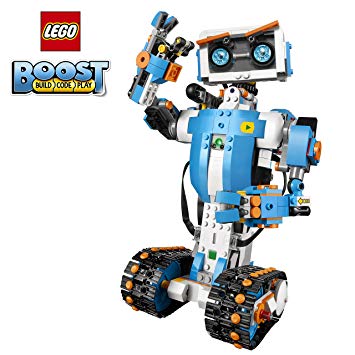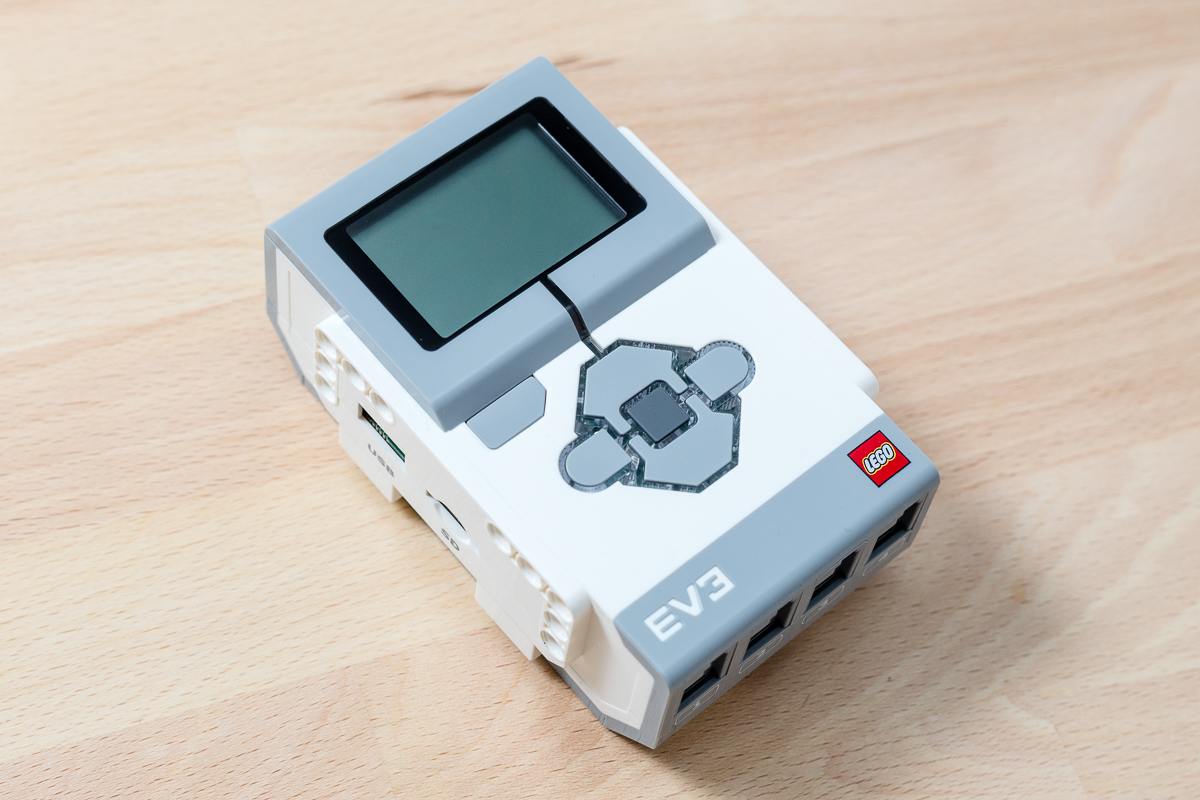New champion from Lego, meet: Lego Boost

On Habré, there are two types of articles about Lego's robotics: conditionally “hayterskie” , with a leitmotif “Lego is not needed” and from Lego company itself . This is justified, or not so - the topic of a separate article, but, apparently, Lego understands that robo-designers are becoming more and more in demand and need to be more flexible if you do not want to completely lose this niche. Until now, there have been two main sets on the market: Mindstorms EVE3 and WeDo 2.0. What has changed and how Boost is cooler? I will try to compare the “newbie” with these two solutions, so that you would understand how far Lego has progressed.
So: WeDo 2.0

Of the "smart" components: smart, motor and a pair of sensors (distance \ tilt), despite the fact that you can only connect the motor and one sensor at the same time, or two sensors and ... everything. Not much. Lego explains this by the fact that with proper imagination even on this set of components one can realize “hundreds of projects” (continuation of the rhetoric that three standard Lego bricks can be connected in 1060 different ways ... Interestingly, this sentence will be told by a child who will be offered to play three bricks?) and indeed - the methodical materials of the education series offer quite a lot of different “handicrafts”, but ... 12,000 rubles minimum. This seems to be some nuances of licensing, maybe - software and teaching materials, but the fact remains - ONE MOTOR!
Question on filling: is it possible to assemble something on one motor that can move and turn? ( Answer: you can. )
What is Boost? Well, formally the same thing, even less: the base (advanced smarthab), motor and sensor (one!).

But the devil is in the details: One sensor is actually two integrated: an obstacle sensor and a color / light sensor (almost three!). In addition, the base has a built-in gyroscope. Thus, Boost sensors can do the same thing as WeDo, plus color. And what is important - at the same time! And the base has two built-in chassis motors, i.e. with additional engines - three! And all this, I repeat, at the same time - there is no need to choose - motors or sensors - all at once. This is a qualitative superiority - at times. At the same time, Boost is half the price of WeDo (well, almost ... At the time of this writing, you can find 7000-7500). Perhaps because it does not belong to a series of education.
So what is Mindstorm EV3 ? Potentially - cool stuff.

Up to 4 motors plus up to 4 sensors (and in fact, on the first port there is a fast I2C, which allows the hub and almost unlimited expansion options), the screen (the mimic output is quite in demand), the speaker (oh ...), USB (with WiFi connections, albeit from a very modest list of compatible equipment) - in general, full stuffing. In theory. In practice, in the basic set (31313) of motors 3 - two large, one small ... Just like in Boost - two running gears and an additional one, only in Boost everything will be MUCH more compact. And the sensors? The sensors are not very good either: there are three loudly declared, but one of them is a button. Color and infrared rangefinder are two different sensors. And ... Everything. There is no gyroscope in 31313: either buy separately, or - bye to self-balancing models! As you can see Boost in front - instead of a button - a whole gyroscope. The color and rangefinder are roughly equivalent to the integrated Boost sensor. Well, yes - in Mindstorm there is still a IR beacon, it is the remote control. But its use in the era of orientation on the smartphone / tablet is very limited. And the price ... Well, you can google - at least 3 times more expensive than Boost!
I also thought the plus was a great Boost orientation on the Lego Classic, and not on a series of
And also, to make friends Boost with the tablet, you just need to press the green button. Mindstorm requires pairing, works differently with apple / android devices (you need to configure in the block itself), and periodically loses connection so that a block reboot is required! With Boost, I don’t have so much practice, but there were no problems yet - everything works and is available to a child of five years old.
Interaction with the child's Boost is implemented as a continuous process in the accompanying application. First you need to build a model according to the attached instructions. Then turn on (one green button, remember?) And the toy will immediately come to life! Previous series required programming to start playing. Here programming is an element of the game.
Is everything perfect? Well, maybe not at all, but on a solid four with a plus! A little upset about the lack of dynamics in the block. With a fairly extensive collection of sounds, and techniques for working with them, all this is implemented on the interfaced device, and not in the database. And I would like the robot to talk himself. You can do without the display (especially since the main model is a robot. Return it, it quite well implements mimicry with the help of an additional motor), and without a speaker, not very. On the other hand, the application is launched on the phone, and if you push the phone into a robot, then ...;) In short, there are options!
There are no opportunities for expansion in terms of electronic components from the word “absolutely”: there are two ports on the base and both are needed for existing modules. However, there are quite enough, and compatibility with almost all Lego sets significantly expands the boundaries of user cases in terms of mechanics.
Thus, Boost is a serious bid to win. The price allows you to compete with counterparts (like products Xiaomi), and the quality as always on top. I hope to continue in the same spirit!
Disclaimer: article not paid for and not biased. Of course, I would like to get a freebie set, but no - I bought it for my own, hard-earned ...;) Like Meindstorm in due time.
UPD1: drobzikin the comments pointed to a serious difference, which sheds light on the difference in price between Mindstorm and Boost: “the role of brains in Boost is played by a mobile device”. Indeed - in Ev3 we have a full-fledged computer under Unix and the program is loaded onto the device before execution, after which it can be launched independently. Boost without a phone / tablet does not work at all. Good or bad - the question. Still, the performance of modern phones is growing exponentially, and the phone in the role of the brain of the robot looks quite logical.
UPD2: nikolayv81in the comments it indicates that performance problems may occur ... Not completely clear - this is the communication channel, or the non-optimized solution itself on the device, but parallel processes with intensive feedback may not have time to be processed at an acceptable speed. Perhaps a faster device does not give such problems, software optimization may help, but if the purpose of the purchase is not quite the initial development of robotics, and something more serious, it is worth bearing in mind.
UPD3: Lego officially posteddocumentation on the BLE protocol for Boost (well, there is not only a boost, there is a WeDo smarthab and some other solutions from them). Thus, users are no longer limited by the Lego development environment and can write programs in any language. Cases of use also greatly expanded!
UPD4:
- pyb00st - library for python .
- movehub - interface for node.js .
- BLE extension is the BLE extension for App Inventor 2 , which, in combination with the open interface specification, allows you to create Boost control programs for android, using, for example, voice commands ...
UPD5: Actually ready example for App Inventor 2 - control it from your smartphone.
Only registered users can participate in the survey. Sign in , please.
